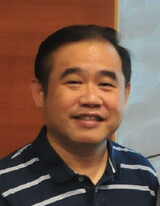Research Focus
We are interested in understanding how a seed is formed. Seeds are derived from a double-fertilization process that leads to the differentiation of three major regions of the seed, including seed coat, endosperm, and embryo. The maternally derived seed coat differentiates from the ovule integuments that surround the embryo sac, transfers nutrients from the maternal plant to the developing embryo, and protects the seed during development and dormancy. The embryo and endosperm, by contrast, are descendants of the fertilized egg and central cell, respectively. The endosperm nourishes the embryo early in development, and in dicots, such as soybean and Arabidopsis, is absorbed and only present as a vestigial cell layer, the aleurone, in the mature seed. The embryo forms the two major embryonic organs: (i) an axis, containing shoot and root meristems, which will give rise to the mature plant after seed germination; and (ii) the cotyledon, a terminally differentiated organ, which specializes in storage reserve production and senesces following germination. Seeds shift into a maturation program following axis and cotyledon differentiation, that includes: (i) cessation of cell division, (ii) accumulation of storage reserves, and (iii) preparation for desiccation and dormancy. During this period, cotyledon cells enlarge and undergo a unique endoreduplication process that may facilitate the synthesis of highly prevalent seed-storage proteins that are utilized as an energy source during germination and early seedling growth. At the end of maturation, programed water loss (i.e., desiccation) occurs, metabolic and developmental processes are suspended, a dormancy period begins that can last for several millennia, and the quiescent seed awaits an optimum environment for germination and seedling growth.
Seed development is a complex process. In order to understand the basic biological processes contributing to seed development, we use multiple approaches, including genetic and molecular biology tools. Furthermore, to understand the complex process in a more comprehensive way, we study gene activities on a whole-genome basis. We use systems biology approach and integrated omics to investigate genome-wide genetic and epigenetic mechanisms underlying seed development.
By understanding the basic seed development processes, we may apply the knowledge and use genome editing, genetic engineering and breeding to improve plant traits relative to seed, e.g., seed number and seed size. The ultimate goal is to benefit agriculture by contributing to crop improvement and, thus, to increase food yield.


Kuo-Chen Yeh
Distinguished Research Fellow and Director
Director (2019.1.16-present)
Interim Director (2016.10.1 -2019.1.15)
Director/Coordinator of Molecular and Biological Agricultural Sciences program of Taiwan International Graduate Program (TIGP-MBAS), Academia Sinica (2015-2020)
Distinguished Research Fellow (2024-present)
Research Fellow (2014-2024)
Associate Research Fellow (2009-2013)
Assistant Research Fellow (2001-2009)
PDF Howard Hughes Medical Institute and Department of Biological Sciences, Stanford University, USA (1999-2001)
Ph.D. Plant Biology Graduate Group, University of California, Davis, USA (1994-1999)

